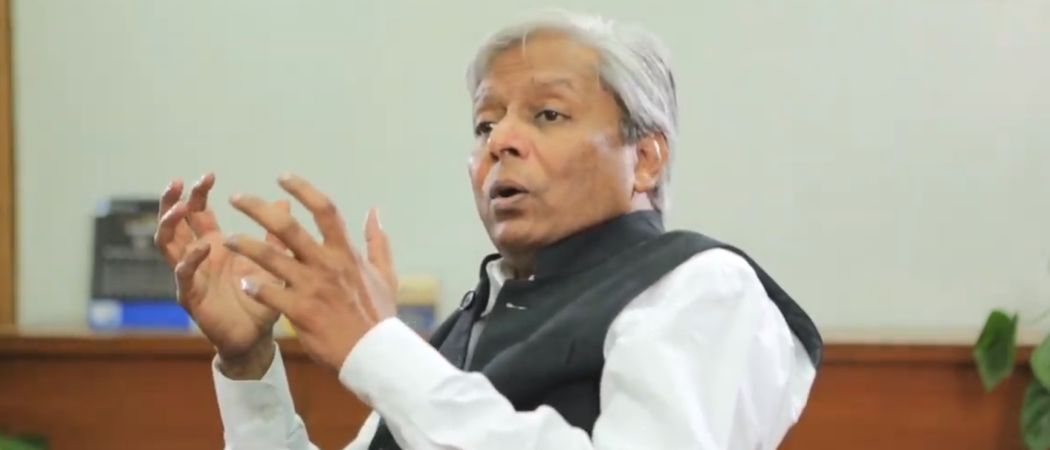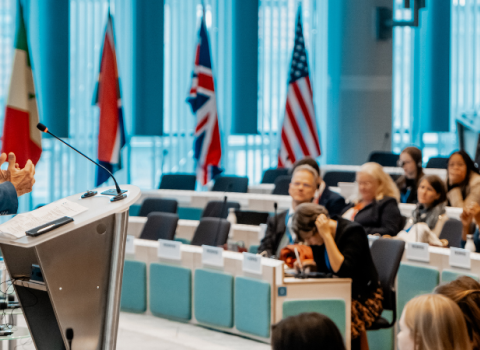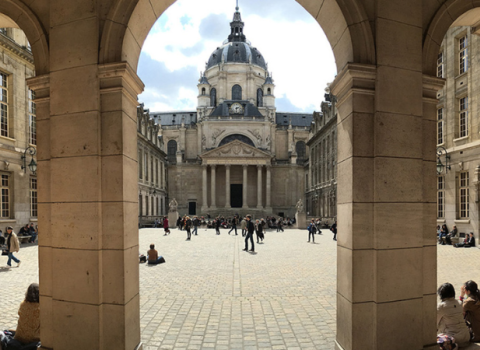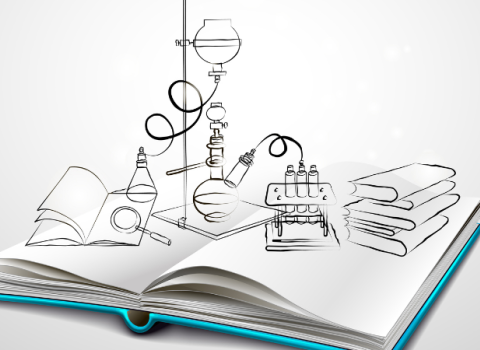Krishnaswamy VijayRaghavan wants a fairer system, and calls for science to break its addiction to ‘vanity’ publications

Krishnaswamy VijayRaghavan, India's science adviser. Screen capture from Living Science
India’s annual multi-million-euro outlay on scientific publishing is a bad deal for the country, says Krishnaswamy VijayRaghavan, principal scientific adviser to the government.
“We have to take a clear position – the current situation is untenable and costly,” VijayRaghavan told Science|Business.
VijayRaghavan was speaking after he tweeted that India would be signing up to the most radical opposition to the scientific publishing status quo: Plan S, an initiative launched last year by a group of European funders to ensure that, by 2020, taxpayer-funded research results are made immediately free to read.
The controversial scheme spearheaded by Robert-Jan Smits, the European Commission’s special envoy on open access, has received backing from the European Research Council and 13 national funding bodies, including agencies in France, the Netherlands and the UK. Two of the biggest medical research charities in the world, Wellcome Trust and the Bill & Melinda Gates Foundation, are also on board.
With Plan S, VijayRaghavan, a fly geneticist who has been advising prime minister Narendra Modi’s government for almost a year, feels the tide is turning against the legacy subscription model of publishing.
His vision is unabashedly utopian. “There’s no question – there must be complete open access for science,” he said.
Academic publishing is a hugely profitable business, with total global revenues of more than €10 billion. The market is described in a 2005 Deutsche Bank report as a “bizarre triple-pay” system, in which “the state funds most research, pays the salaries of most of those checking the quality of research, and then buys most of the published product.”
The total cost to Indian taxpayers is not fully known due to the sprawling nature of the country’s higher education sector, but probably runs into the hundreds of millions of euros, with scientific production surging in recent years.
“The exchange rate means we often pay a lot more for subscriptions,” VijayRaghavan said. “If you add up the entire cost of subscriptions, they are rather substantial; if you add the article processing charges too, it’s a huge amount,” he said.
Plan S compliant funders will force grant recipients to submit to open access journals, with scientists paying an upfront free to cover editing costs. That then ensures the work is available free to access for anyone in perpetuity. Plan S papers would have a liberal publishing licence allowing anyone else to download, translate or otherwise reuse the work.
Frustration with the current system is growing. In India, the third biggest producer of scientific papers in the world after the US and China, there is a rising clamour for all publicly funded research to be available free, to anyone, VijayRaghavan said.
“Our researchers, our citizens, our patients: they want access to the primary literature,” he said. Tight budgets mean many universities, for instance, cannot grant undergraduate students access to top journals.
Scientists are fighting for reform in other parts of India’s research system. The country has seen months of protests and marches from early-career scientists looking for pay increases. Financially, the country of 1.3 billion people struggles to compete with the world’s top scientific superpowers, the US, Europe and China. Despite its giant size, India has a relatively small number of researchers, and many emigrate.
Community addiction
Every scientist knows that success is determined by getting their work into the most prestigious journals.
This system is not any one publisher’s fault, VijayRaghavan said.
“It’s an addiction fed by the publishers, but you can’t blame the publishers for that – it’s the community. We’re caught into chasing metrics. Life sciences, in particular, has this journal vanity to an excessive manner. That is not a good thing. It’s a creation of the community,” he said.
Plan S would block scientists’ route to high-impact journals run by influential science gatekeepers, such as Elsevier, Wiley and Springer.
But a circulating letter last year signed by nearly 2,000 scientists, including two Nobel laureates, criticised Plan S as “too risky for science”, “unfair”, and “a serious violation of academic freedom.” There is also concern that research agencies in some of Europe’s leading scientific nations, such as Switzerland and Germany, have not yet signed up.
“Scientists would like to publish in journals of their choice,” VijayRaghavan acknowledges. “But I’m sure journals can be persuaded to change their models to open access. Publishing houses have a whole basket of journals but they make some elite and others less elite. [Meanwhile], the [open access] journals of quality are increasing in number,” he said. “Open access and quality are two feasible goals.”
But is the 2020 timeline set out by Plan S feasible for India, a country with 760 universities and 38,498 colleges?
“I should think so. We are not working alone on open access [policies], we’re working with other funders all over the world including the Wellcome Trust and the Howard Hughes Medical Institute.”
VijayRaghavan says the ever-expanding global imprint of science means there will always be enough business for publishers.
“Up to now, the perspective of what is good science, and the main scientific effort, has been dominated by the west. But in the next decades, India, China, Latin America and Africa will all be critically important to science,” he said.





 A unique international forum for public research organisations and companies to connect their external engagement with strategic interests around their R&D system.
A unique international forum for public research organisations and companies to connect their external engagement with strategic interests around their R&D system.